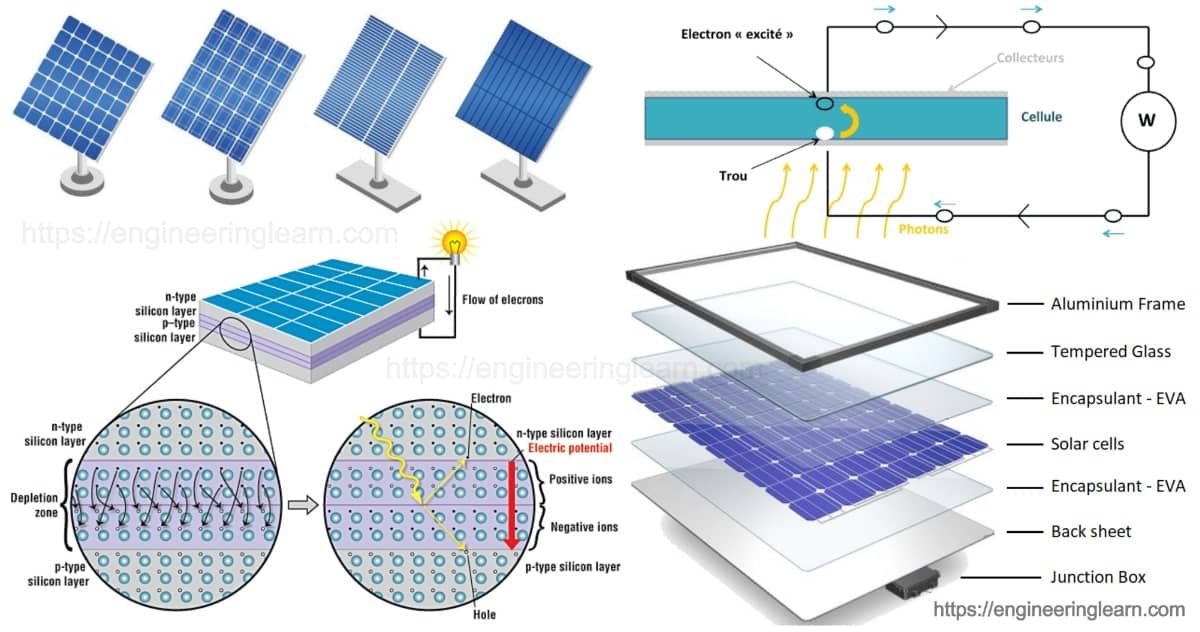Not known Details About Solar Systems
A Biased View of Solar Systems
Table of ContentsSolar Systems Fundamentals ExplainedNot known Factual Statements About Solar Systems An Unbiased View of Solar Systems8 Simple Techniques For Solar Systems
There are 3 various sorts of solar panels: monocrystalline, polycrystalline, and also thin movie. Monocrystalline photovoltaic panels are very efficient and also have a sleek design, but come at a higher rate factor than other photovoltaic panels. Polycrystalline solar panels are cheaper than monocrystalline panels, nonetheless, they are much less effective and aren't as visually pleasing.Nowadays, there are numerous varieties of monocrystalline solar panels on the market to pick from., are ending up being a significantly popular monocrystalline choice.
Because monocrystalline solar cells are made from a single crystal of silicon, electrons have the ability to quickly move throughout the cell, boosting total efficiency. Not just do monocrystalline panels have the highest possible efficiency ratings, they commonly likewise have the highest power capacity rankings, too. A lot of monocrystalline panels on the marketplace today will certainly have a power output ranking of at least 320 watts, yet can go up to around 375 watts or higher!.
Because polycrystalline cells contain multiple silicon cells, the electrons can not move as quickly and as an outcome, decrease the effectiveness of the panel. The lower efficiency of polycrystalline panels additionally indicates they tend to have a reduced power result than monocrystalline panels, usually ranging in between 240 watts and also 300 watts.
Some Ideas on Solar Systems You Need To Know
In order to meet your power requires, you would certainly require to mount even more thin movie panels over a huge area to create the same quantity of power as crystalline silicon solar panels. This is why thin film solar panels do not actually make sense for residential setups where space is limited.
The temperature coefficient tells you exactly how a lot the power outcome will certainly decrease by for every 1 * C over 25 * C the panel obtains. The common temperature coefficient for mono as well as polycrystalline panels generally drops somewhere between -0.
Actually, with some thin film panels, it's difficult to even see the specific cells within the panel. They additionally tend to have much less circuitry and also busbars, indicating there's less white room. However, due to the fact that they are so ineffective, you would certainly need to cover your whole roofing in thin movie panels - which might or might not be your design.

Some makers have actually Going Here worked around this with black packing or shaping the cells in different ways, however these visual modifications can influence both the cost as well as performance of the panels. Overall, monocrystalline panels still look smooth, but they're a bit much more pronounced than thin movie panels. solar systems. The procedure in which polycrystalline solar batteries are produced causes the cells to have a blue, marbled appearance.
Not known Incorrect Statements About Solar Systems
If you get on a tight budget, polycrystalline panels might make more sense for you. We do not recommend thin film solar panels for domestic installations - their performance and sturdiness don't make the affordable worth it, and also it's unlikely you'll have nearly adequate space to install the number of slim film panels you would certainly need to cover your house electrical power usage.
Since they are made from pure silicon, they can be easily recognized by their dark black shade. The usage of pure silicon also makes monocrystalline panels the most space-efficient and also longest-lasting among all 3 solar panel types. This comes at a price a lot of silicon is squandered to generate one monocrystalline cell, sometimes getting to over 50%. solar systems.

Amorphous silicon panels (A-Si) derive their name from their unformed nature. Unlike mono-and polycrystalline solar cells, the silicon is not structured on the molecular degree.
The Solar Systems Statements
$0. 32-$0. 65 $1 $1. 50 $0. 70 $1 $0. 60 $0. 70 $0. 50 $0. 60 go to this website $0. 43 $0. 50 Note that these figures don't include the expense of setup and also labor. With labor and various other above aspects, the total can increase to $2. 50 to $3. 50 per watt.

This suggests that thin-film panels can be an excellent option for hotter settings or areas that experience more sunlight throughout the year. The updated International Building ordinance of 2012 calls for solar panels to match the fire score of the roof where they are set up. This is to make certain that the modules do not accelerate the spread of fires in case of a fire.